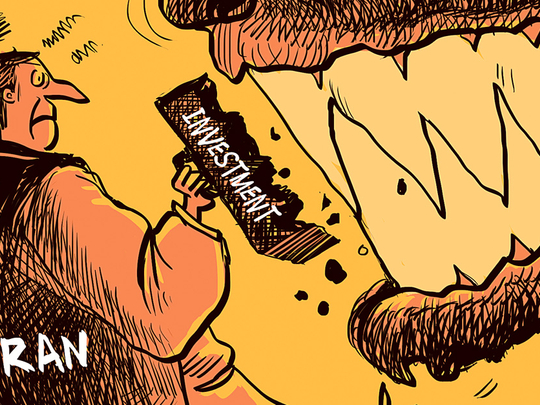
Geopolitics provides an amazing array of theories to understand situations such as the ones that exist in both Syria and Iraq.
The Syrian crisis that started as a result of a regime’s heavy handed assaults against the Syrian uprising in 2011 had showed the significance of political geography and geopolitics of different actors involved in the crisis. For instance, the main reason why the Iranian regime, which is a theocracy, is supporting the secular Baathist regime in Damascus is that because Syria provides a strategic geographic corridor for Iran to spread its influence in the Levant, particularly in Palestine and Lebanon.
Indeed, the greater Syrian region had always been and will always be a region of tensions as the countries that were formed out of the greater Syria was a result of the 1916 British-French imperialistic Sykes-Picot agreement, which disregarded the wishes and the backgrounds of the various groups living in greater Syria. Consequently, when a crisis occurs in a country such as Syria, identity politics start to polarise relations between different groups in the entire Middle East region and would draw in countries such as Iran to support client groups to protect its geopolitical interests.
In Iraq too, British colonialism had brought together three Ottoman regions of Baghdad, Basra and Mosul to form modern day Iraq. That explains why the country has a variety of groups in terms of sectarian affiliations and ethnicities, in which there are Shiites who claim to represent the majority of the country, and then there are the Sunnis and the Kurds. Each of these groups are located in different parts of Iraq. The Sunnis live mostly in western Iraq, the Kurds are located in the north-west of the country, and the Shiites live mostly in south and south-east and then there are shared areas wherein two groups live side by side, especially in the city of Bagdad.
For those who live outside the Middle East region, the Iraqi crisis seems to have started when the Islamic State in Iraq and the Levant (Isil) overran the city of Mosul in mid June 2014. However, the current crisis started in January 2014 aided by the sectarian policies of the Iraqi government and the Isil being attacked by rebel forces in Syria. Indeed, one could go back as far as the US occupation in 2003 in trying to explain the current crisis in Iraq but that is a different story. In January 2014, Isil capitalised on the growing tension between Iraq’s Sunnis and the Shiite-led government by taking control of the predominantly Sunni city of Fallujah, in the western province of Anbar. One should not fail to notice here that Isil has exploited political geography to its advantage when it established bases located inside Syria and used them as launching pad to move into Iraq.
Mosul, Iraq’s second largest city, fell to Isil as the US-trained Iraqi forces abandoned their post. The fleeing of the Iraqi forces showed the failure of the outgoing president Nouri Al Maliki’s sectarian policies in managing both the country and the Iraqi armed forces.
Consequently, with the defeat of the Iraqi forces in Mosul, and the advancement of Isil to capturing more areas along with oil fields, the situation was further polarised as Shiite militias outside government control started to emerge. For instance, Thousands of Shiite militia loyal to Moqtada Al Sadr paraded through the streets of Baghdad, raising sectarian tensions amid continued fighting in areas of Iraq. The success of Isil in controlling large areas between Syria and Iraq encouraged it to declare an Islamic caliphate.
The declaration of a caliphate by Sunni extremists in Iraq has irritated many parties, most notably Iran, which saw its huge investment in both Syria and Iraq crumbling and taken over by Isil.
Since the US invasion in 2003, Iran’s major concern in Iraq has been not to allow it to re-emerge as both an ideological and military adversary. There is a strong belief in Tehran that the cause of “Iraq’s aggressive behaviour” was the Sunni domination of Iraqi politics. Iran has also huge geo-economic interests in Iraq as it faces trade embargoes from the west. Iranian influence over Iraq allows it to bypass the sanctions. Traditionally Iraq’s trade was oriented to the Arab world through Jordan in the west and Turkey and the Soviet bloc countries in the north, but that has changed since the removal of Iran’s arch enemy — Saddam Hussain.
Those reasons explain why Iran would do whatever it takes to prevent Iraq and Syria — the fertile crescent — from failing under unfriendly Sunni regimes, including sending elite paramilitary Al Quds forces to aid the Syrian and the Iraqi regime.
Dr Marwan Kabalan is a Syrian academic and writer.









